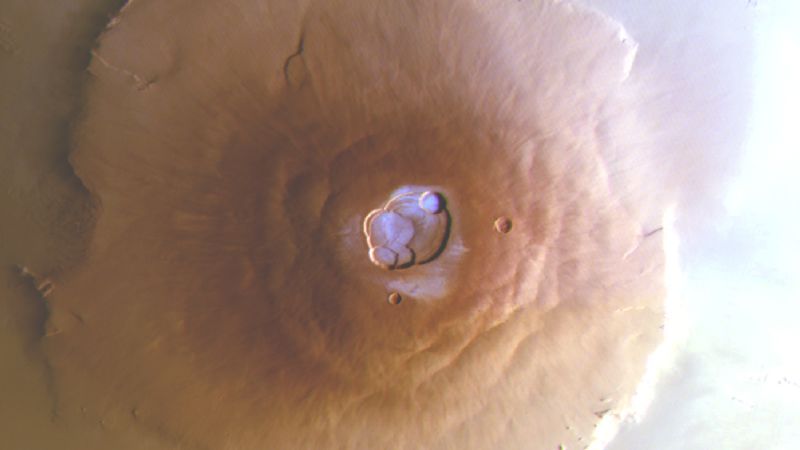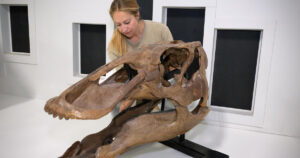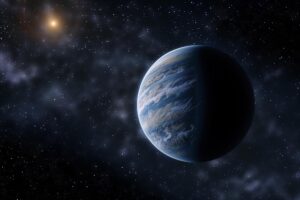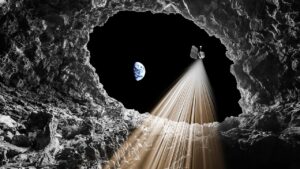CNN
—
The equatorial region of Mars is home to the tallest volcanoes in the Solar System, which – in addition to the height of three Mount Everests in some cases – may be harboring an unexpected icy phenomenon, a new study has found.
The largest, Olympus Mons, is 16 miles (26 kilometers) high and a whopping 374 miles (602 kilometers) in diameter, making it about 100 times larger than Earth’s largest volcano, Mauna Loa, in Hawaii. In fact, the entire Hawaiian island chain would fit inside the Martian volcano, according to NASA.
NASA/JPL/MSSS
The results of the study show that water can be found almost everywhere on the red planet’s surface, said lead author Adomas Valantinas.
These giants are covered with large calderas – bowl-shaped depressions caused by the collapse of the top of the volcano after an intense eruption.
The sheer size of the calderas—up to 75 miles (121 kilometers) in diameter—creates a special microclimate inside them. Using cameras mounted on probes orbiting Mars, researchers have for the first time observed morning frost forming inside the calderas.
“The deposits form at the bottom of the caldera, but we also see some frost on the rim. We also confirmed that it’s ice and probably water,” said Adomas Valantinas, a postdoctoral fellow at Brown University who made the discovery as a postdoctoral fellow at the University of Bern , Switzerland, and lead author of the study.
“This is important because it shows us that Mars is a dynamic planet, but also that water can be found almost everywhere on the surface of Mars.”
The team of more than two dozen researchers spotted frost at four volcanoes: Arsia Mons, Ascraeus Mons and Ceraunius Tholus, as well as Olympus Mons, according to the study published Monday in the journal Nature Geoscience.
The deposits are extremely thin — just one-hundredth of a millimeter thick, or one-sixth of a human hair, according to Valantinas — but they’re spread over such a large surface area that they represent a lot of water. “Based on rough estimates, it’s about 150,000 metric tons of water ice, the equivalent of 60 Olympic swimming pools,” he said.
To observe the deposits, the team first looked at around 5,000 images taken by CaSSIS – the University of Bern’s Color and Stereo Surface Imaging System – a high-resolution camera that has been photographing Mars since 2018. It’s among the instruments aboard the ExoMars Trace Gas Orbiter, a spacecraft launched in 2016 as a collaboration between the European Space Agency and Russia’s Roscosmos space agency.
“This is also the first discovery coming from CaSSIS, which is quite exciting,” Valantinas said.
The team confirmed their observations with two other instruments: NOMAD, a spectrometer also aboard the Trace Gas Orbiter, and HRSC, or High Resolution Stereo Camera, an older camera aboard ESA’s Mars Express orbiter, a spacecraft launched in 2003.
ESA/DLR/FU Berlin
This image of the Olympus Mons was taken early this morning (7:20am local solar time) by the stereo camera on board ESA’s Mars Express, as part of a new study revealing for the first time water frost near the equator of Mars – a part of the planet where it was thought impossible for frost to exist.
Valantinas says the discovery came with some serendipity, as he had originally looked for carbon dioxide frost but found none. The deposits have not been seen until now because they only form in the early morning and during the colder months, making the observation window narrow.
However, it is unlikely that the ice will one day be collected by human astronauts on Mars. “It would be quite difficult because even though it’s a large deposit, it’s also very thin and ephemeral, meaning it’s only there at night and early in the morning, then it sublimates back into the atmosphere,” Valantinas said.
The volcanoes are near the equator of Mars, the planet’s warmest zone, making the discovery of water particularly intriguing, Valantinas said.
“Mars is a desert planet, but there is water ice in the polar caps and there is water ice in the mid-latitudes. Now we also have water freezing in the equatorial regions, and the equatorial regions are generally quite dry. So that was quite unexpected,” he said.
He added that in the past, when Mars had a thicker atmosphere and a different climate, there may have been glaciers on these volcanoes. The team now wants to expand the search for ice to all of Mars’ more than a dozen volcanoes.
If humans are ever going to explore the red planet, we’ll need to know where the water is, so the Martian water cycle is an important field of study, said John Bridges, a professor of planetary science at the University of Leicester in the United States. Kingdom, which was not involved in the study.
“This paper is a fantastic use of the ExoMars Trace Gas Orbiter’s CaSSIS camera, which provides both visible color and infrared light reflected from the surface of Mars,” Bridges said, calling the results “a remarkable achievement.”
In addition, Mars’ water cycle is nowhere near as active as it was billions of years ago, so it’s challenging to measure how water moves around the surface, noted J. Taylor Perron, Cecil and Ida Green Professor of Earth, Atmospheric and Planetary Sciences at MIT. Perron was also unrelated to the new study.
“If the frost on these volcanoes is confirmed to be water (and not carbon dioxide), it would be surprising,” he said.
Everywhere on the surface of Mars is cold and dry, Perron added, but the region around the equator is drier and less cold than the poles, so it’s one of the last places you’d expect to see water ice. It would also raise the question, he concluded, of where the water vapor that forms the frost comes from—from the volcanoes, even though they are dormant, or from much further away, such as the polar ice caps.



